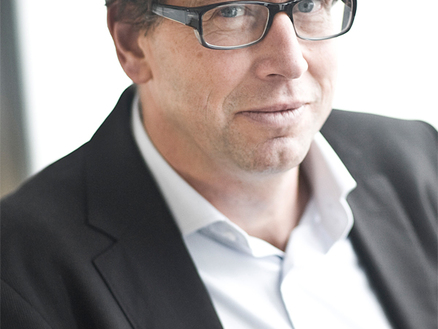Huddle around the hubs

 In a 1997 survey on how the Dutch saw the future of their living environment most respondents were optimistic about their own particular neighbourhood. But they weren’t as sanguine about the country as a whole, says professor Zef Hemel.
In a 1997 survey on how the Dutch saw the future of their living environment most respondents were optimistic about their own particular neighbourhood. But they weren’t as sanguine about the country as a whole, says professor Zef Hemel.
They were concerned about increasing traffic, industry and pollution, and especially worried that the country might, in time, become completely built up. They feared that their ideal – to live in or near the country – would become impossible to achieve.
Seventeen years later the building project that was Vinex has been completed. 600,000 homes were built, half of them in the seven largest urban areas. The homes were shielded from motorways and railway lines by brand new office complexes.
If a survey were held today the results would probably be similar: most people would be positive about their own living environment but their perception of the fate of the rest of the country would be much more pessimistic.
Building production
Yet things have changed considerably since 1997. It’s not just the financial crisis but, more importantly, the changing demographics of the country and the reduction of the building volume as a result of new technology and changing living preferences. Populations in parts of the Netherlands are already contracting and big cities are becoming ever more popular.
The number of households will certainly grow and if the economy rallies building production will definitely grow but only in certain areas and mostly in cities.
The internet is the main cause for a projected decrease of shops, offices, hotels and schools. Perhaps the number of logistical ‘boxes’ will rise but empty real estate will be the order of the day and it will either have to be knocked down or re-used.
The reason is that higher turnovers can be made using fewer square metres. Automation, clever logistics and designated websites enable people to share or rent out things and spaces – their home, farm, garage, or shop.
Hubs
The most important development, however, is that physical closeness is becoming more important than accessibility. Again, technology is at the bottom of people’s behaviour.
Lots of motorways and railway lines suggest that people and activities will be spread more or less evenly around the country. Nothing could be further from the truth. People tend to congregate around the hubs. The more networks, the bigger the concentrations of people around these focal points compared to the population numbers in the rest of the country.
And something else is happening as well. The more people earn the more demanding they will become of their living environment. This will also make them concentrate in places they think are ‘the place to be’.
Increasingly these will be the cities with the best amenities, the best opportunities, the best reputation and the most attractive city planning. Cities which function as portals to the rest of the world will be particularly popular and inevitably Amsterdam will head the list.
Sociologists have also pointed out that an increasingly flexible and uncertain jobs market means that people have to adapt, innovate, improvise and grab opportunities where they can. A paradox is emerging where digital information is concerned: the more accessible this information becomes, the more people seem to crave physical contact.
Highs and lows
The point of personal encounters, especially chance meetings, is to hear from others what is going on, vital information when it comes to innovation and making use of opportunities. Most people know as if by instinct that success is more likely to happen where lots of people congregate.
This is what the Netherlands will look like then: there will be big differences in population numbers, with highs and lows, contraction and growth, proper cities but also villages which will, again, find themselves in trouble. The time that projected population numbers were divided among the twelve provinces is definitely over.
That is not to say people don’t appreciate their own living environment and that many of them wouldn’t dream of moving to the densely populated west of the country. But their children are growing up. They will move out. If they are bright they will probably move to a university town to study. And once they finish they will move to Amsterdam. And if Amsterdam doesn’t build more homes it will become too expensive and all these talented people will move to places like London, Singapore or New York.
The Netherlands needs a proper big city to hold on to its talented young people, especially in the years ahead.
Zef Hemel is professor of urban and regional planning at the University of Amsterdam.
This article appeared earlier in Trouw
Thank you for donating to DutchNews.nl.
We could not provide the Dutch News service, and keep it free of charge, without the generous support of our readers. Your donations allow us to report on issues you tell us matter, and provide you with a summary of the most important Dutch news each day.
Make a donation